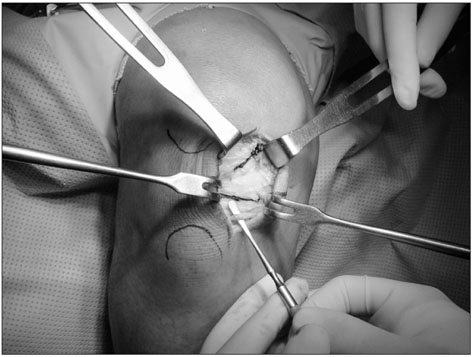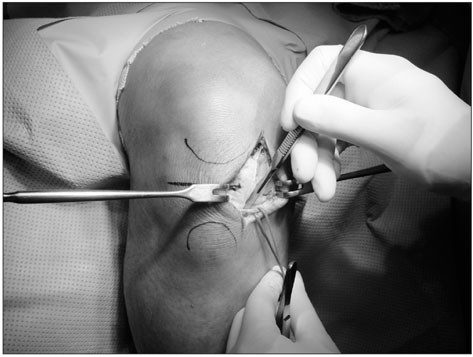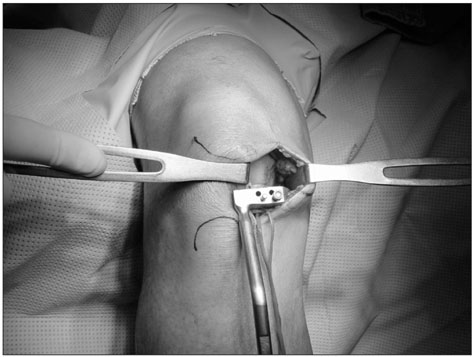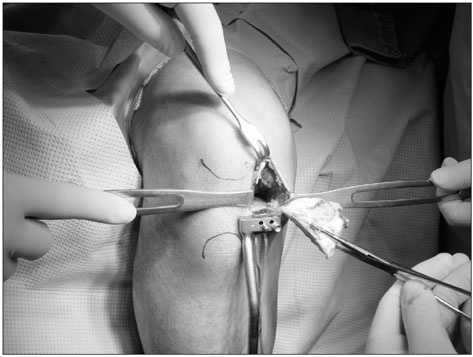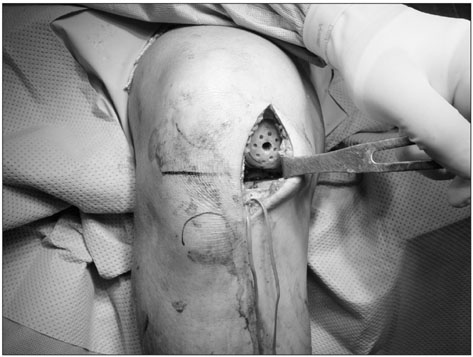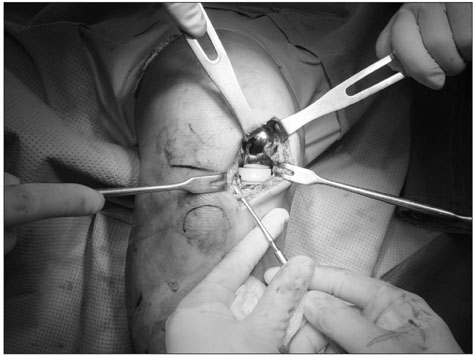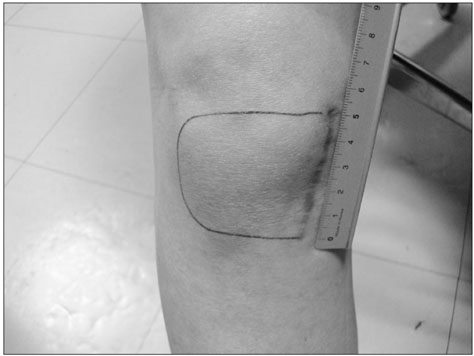Clin Orthop Surg.
2010 Dec;2(4):232-236. 10.4055/cios.2010.2.4.232.
Preventing Lateral Skin Numbness after Medial Unicompartmental Knee Arthroplasty
- Affiliations
-
- 1Department of Orthopaedic Surgery, Daedong General Hospital, Busan, Korea. mhsong21@hanmail.net
- KMID: 1719324
- DOI: http://doi.org/10.4055/cios.2010.2.4.232
Abstract
- BACKGROUND
The authors report the results of preserving the infrapatellar branch of the saphenous nerve during unicompartmental knee arthroplasty to prevent lateral skin numbness.
METHODS
All 100 cases had medial compartmental osteoarthritis and a minimally invasive technique had been used. The mean follow-up duration was two years and eight months (range, 24 to 42 months).
RESULTS
The classification according to the location of this nerve was observed as either Mochida Type I with 76 cases (76%), Type II with 16 cases (16%), and unclassified type with 8 cases (8%). In Type I, the nerve was saved in 62 cases (82%), but could not be preserved in Type II because of the surgical procedure. These results showed that the mean distance from the joint line to the nerve of Type I was 9.13 mm (range, 4 to 15 mm) and the nerve passed inferiorly.
CONCLUSIONS
This study showed the location of this nerve can be predicted ahead of the procedure, which will help preserve it during the surgery.
MeSH Terms
Figure
Reference
-
1. Borley NR, Edwards D, Villar RN. Lateral skin flap numbness after total knee arthroplasty. J Arthroplasty. 1995. 10(1):13–14.
Article2. Johnson DF, Love DT, Love BR, Lester DK. Dermal hypoesthesia after total knee arthroplasty. Am J Orthop (Belle Mead NJ). 2000. 29(11):863–866.3. Mochida H, Kikuchi S. Injury to infrapatellar branch of saphenous nerve in arthroscopic knee surgery. Clin Orthop Relat Res. 1995. (320):88–94.
Article4. Hopton BP, Tommichan MC, Howell FR. Reducing lateral skin flap numbness after total knee arthroplasty. Knee. 2004. 11(4):289–291.
Article5. Hunter LY, Louis DS, Ricciardi JR, O'Connor GA. The saphenous nerve: its course and importance in medial arthrotomy. Am J Sports Med. 1979. 7(4):227–230.
Article6. Berg P, Mjoberg B. A lateral skin incision reduces peripatellar dysaesthesia after knee surgery. J Bone Joint Surg Br. 1991. 73(3):374–376.
Article7. Clemente CD. Gray's anatomy. 1985. 30th ed. Philadelphia: Lea & Febiger;1232–1233.8. Arthornthurasook A, Gaew-Im K. Study of the infrapatellar nerve. Am J Sports Med. 1988. 16(1):57–59.
Article9. Ebraheim NA, Mekhail AO. The infrapatellar branch of the saphenous nerve: an anatomic study. J Orthop Trauma. 1997. 11(3):195–199.
Article10. Poehling GG, Pollock FE Jr, Koman LA. Reflex sympathetic dystrophy of the knee after sensory nerve injury. Arthroscopy. 1988. 4(1):31–35.
Article
- Full Text Links
- Actions
-
Cited
- CITED
-
- Close
- Share
- Similar articles
-
- Dislocation of the Polyethylene Bearing of the Medial Unicompartmental Knee Arthroplasty: A Case Report
- Early Major Complications Following Unicompartmental Knee Arthroplasty: Three Case Reports
- Loose Body of Retained Cement after Unicompartmental Knee Arthroplasty
- Snapping Pes Syndrome after Unicompartmental Knee Arthroplasty
- Fracture of the Medial Tibial Condyle in Unicompartmental Knee Arthroplasty: Report of 3 Cases

